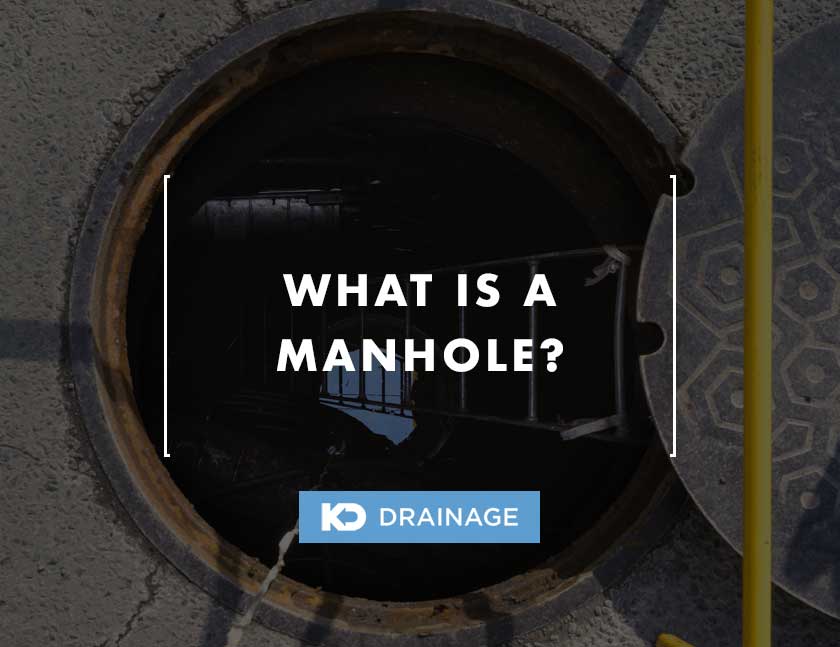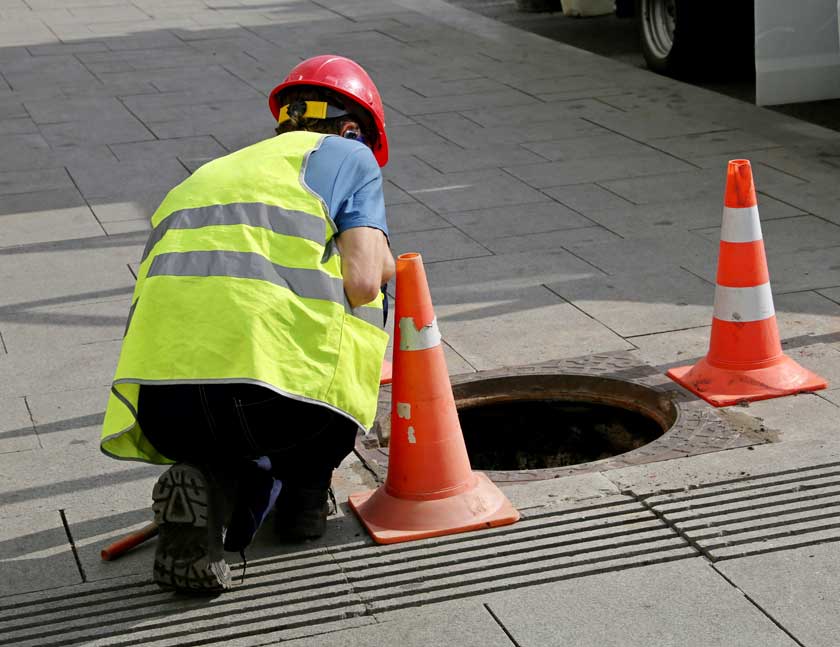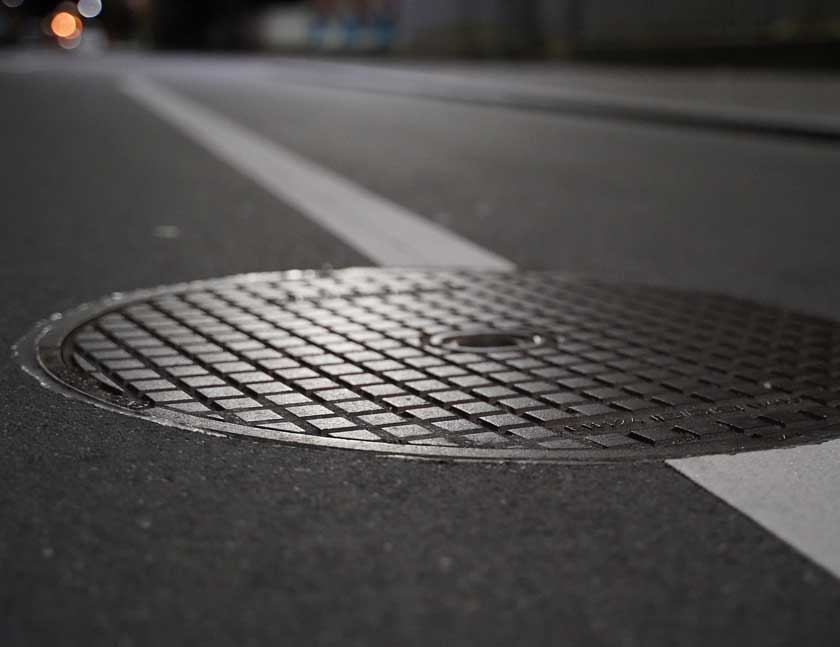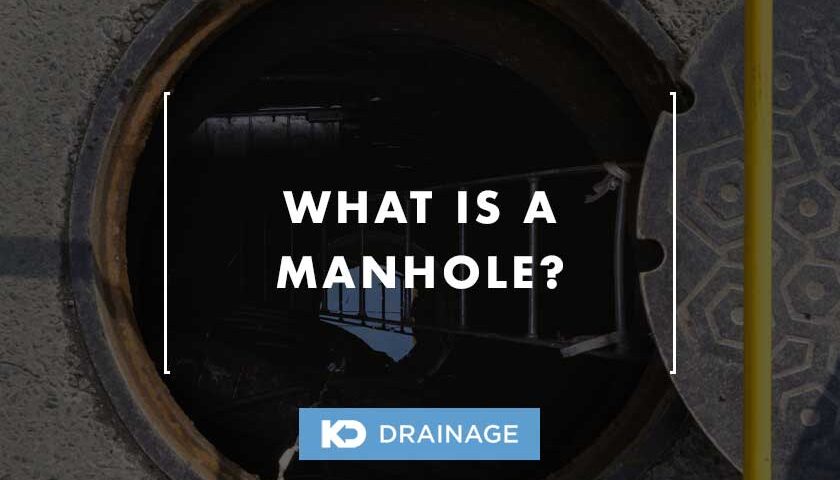
How to Unblock a Dishwasher
1 February 2023
What’s the Cost of Moving Drains for an Extension?
1 April 2023What is a Manhole?

Day to day we see several manholes in the street but chances are, we don’t really bother to understand what they are, their purpose or how they’re made.
Manholes are openings in the ground, which allow access to the drainage systems.
They’re covered for safety and hygiene purposes, but in cases of inspection, repairs, cleaning or unblocking, the lids can be removed to access within.
Let’s take a deep dive into their purpose. and why they’re important for maintaining public drainage systems.
Table of Contents
What is a Manhole (Inspection Chamber)?
A manhole, or as it’s sometimes referred to, an inspection chamber or utility hole, holds waste water.
In fact, underneath the lid of the manhole is a chamber, with interconnected pipes to carry away waste water to designated areas.
Manholes are access points for underground public utilities.
They’re important as through them inspections and maintenance can be carried out as and when required.
Underground services such as sewers, water, and storm drains have manholes, as do electricity, telephone and gas supplies in certain circumstances.
What Does a Manhole Look Like?

Image credit: Shutterstock
The manhole is essentially a chamber where wastewater is collected.
The chamber is usually made from concrete, and is situated right below the manhole lid.
Hence, when the lid of the manhole is removed, the chamber can be accessed.
The lids or manhole covers are designed in a way to prevent unauthorised access, as well as accidents.
Such covers are generally made from metal, but other materials such as precast concrete and glass reinforced plastic are also used nowadays.
Then there are laterals, or parts of the drainage system, which join to the main drainage line to carry away the waste.
There will also be benching, or channels, that are carved out to allow for the waste to travel in a specific direction.
Manholes come in various shapes.
While round manholes are the most common since roundness is considered to be the best shape to resist compression by earth, rectangular or square covers are also common, especially at street level.
In some villages one may also find triangular shaped manholes.
What is a Manhole Used For?
There are manholes located at certain intervals down the drainage system.
The reason is to ensure that there’s proper access when required, and also to have better clearing and resolving of issues.
The manhole which is closest to any identified issues can be used to repair the problem or remove the blockage more easily.
When drainage systems become blocked and start to back up, a drainage engineer will be able to detect the exact location of the problem within the drainage system.
Since there’s several manhole access points, this allows access at key junctions.
Manholes also help to lay the sewer line, and join the sewers.
Features of a Manhole

Image credit: Pixabay
The main parts of a manhole are the chamber and the vertical circular pipe.
The latter is available in various sizes and depths, and is used to access the inspection joints of the system.
Manholes are typically positioned 0.5m away from curb lines to be away from the wheel line of traffic.
Manholes can be made from the following materials:
Plastic Manholes
Plastic manholes are made from polyethylene.
They are manufactured as a one-piece construction, and have no seams or seals in order to prevent the need for maintenance.
Such manholes are considered to be environmentally friendly and sustainable, since they do not cause any adverse effects to the soil.
They are also highly resistant to corrosion and will not degrade over time.
Hence, maintenance is minimal.
Concrete Manholes
Concrete manholes are traditionally the most common types of manholes found in the street.
These manholes are very durable, with a lifespan of around 100 years.
This is one of the main reasons why they were and still remain commonplace, and used a great deal.
Fibreglass Manholes
Fibreglass manholes are also becoming more commonplace.
The basic structure of the manhole will incorporate features such as flumes, grinder channels, weirs and separation units.
The main manhole barrel and the cover will be made from fibreglass.
Hence, all the units will be sealed together so that there won’t be seams or seals.
Fibreglass manholes weigh much less than their concrete equivalent, and are thus easier to handle.
Besides being lightweight, they’re also easy to install and very durable.
Types of Manhole
Manholes vary when it comes to depth, and are classified as shallow, normal and deep manholes as follows:
Shallow Manhole
A shallow manhole typically has a depth ranging between 75 and 90cm.
Such manholes are constructed at the start of a branch or in areas where traffic tends to be low as their cover is relatively light.
Normal Manhole
Normal manholes are installed at the sewer line.
These have a heavy cover, and their depth is 150cm.
Generally these manholes are square in shape.
Deep Manhole
Deep manholes are those which have a depth greater than 150cm.
The cover on top tends to be very heavy.
The facility to go down in such a manhole is also increased considering the greater depth.
Conclusion
Manholes serve a number of purposes, and as discussed, they can be made from different materials and come in varying depths.
Whilst being simple elements around us, they serve a very important purpose.
Their construction and materials have evolved over the years to ensure they are as durable, safe and sustainable as possible.




